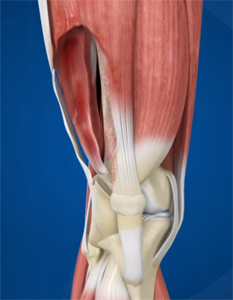
What is Soft Tissue Sarcoma Resection?
A sarcoma is a rare type of malignant tumor originating from the connective tissue in the body.It can develop in both the hard and soft tissues. Soft tissue sarcomas may develop in the muscles, fat, nerves, blood vessels, tendons, and other tissues around the joints and the deep tissues of the skin. Soft tissue sarcoma resection is a procedure to surgically remove the soft tissues affected by the sarcoma. Sarcomas mostly develop in the arms and legs but can affect any part of the body. The goal of resection surgery is to completely remove the tumor at the site and ensure that no cancer cells are left behind.
Indications for Soft Tissue Sarcoma Resection
Your doctor will recommend this procedure after considering a number of factors including the size and extent of the tumor, its location, involvement of neurovascular structures, whether it has spread, and your expected survival.
When a sarcoma is confined to one region of the body, surgery is the best chance for cure. For small, low-grade(slowly growing and spreading) tumors in the limbs, surgery alone may be adequate. Larger tumors, high-grade tumors, or sarcomas in other parts of the body such as the abdomen or head may require a combination of surgery, radiation, and chemotherapy. Surgery is not usually recommended for high-grade tumors that have spread to other regions of the body, but it may be performed in some cases. Surgery may even be repeated if cancer grows back in the region, but it is usually combined with radiation or chemotherapy.
Preparation for Soft Tissue Sarcoma Resection
Diagnostic studies help determine the extent of the soft tissue involvement and the proximity of the tumor to important nerves and vessels. Prior to surgery your doctor may recommend a biopsy.
How is Soft Tissue Sarcoma Resection Performed?
Surgery is performed under general anesthesia. One or more incisions are made based on the location of the tumor.
Mohs procedure: For small low-grade tumors close to the skin, a Mohs procedure may be performed where the cancerous tissue is removed in layers and each layer examined microscopically until no cancer is visualized in the last layer. This minimizes the amount of normal tissue removed.
Wide local excision: Most soft tissue sarcomas are treated by wide local excision where the entire tumor is removed with a healthy tissue margin of 1-2 inches.The soft tissues are then rearranged to close the defect or a tissue graft from your own body may be used to replace lost tissue.
The margins of the removed specimen are examined microscopically in the laboratory to ensure that no cancer cells are seen (negative margins). The presence of cancer cells in the margin(positive margins) indicates that cancerous tissue is still present in the region and your doctor may suggest further surgery, chemotherapy, or radiation. Often radiation and chemotherapy is performed prior to surgical resection to help shrink the tumor and control its spread. These treatments may also be administered following surgery to kill the remaining cancer cells.
For tumors in the limb, a limb salvage procedure is usually performed. If the tumor is extensive and involves major blood vessels or nerves, your doctor may recommend amputation of the limb, though this is rare. Amputation may also be performed if the tumor grows back and does not respond well to radiation and chemotherapy.
If the tumor has spread to the surrounding lymph nodes, surgery may be performed to remove the involved lymph nodes as well.
Risks and Complications
Soft tissue sarcoma resection, like any other surgery may be associated with certain risks and complications. These include:
- Infection
- Vessel injury
- Nerve injury
- Recurrence of the tumor

